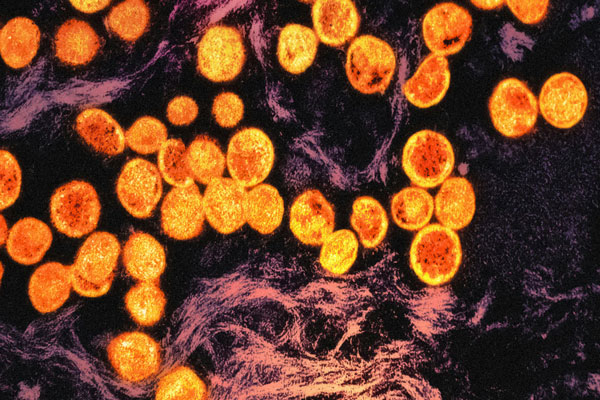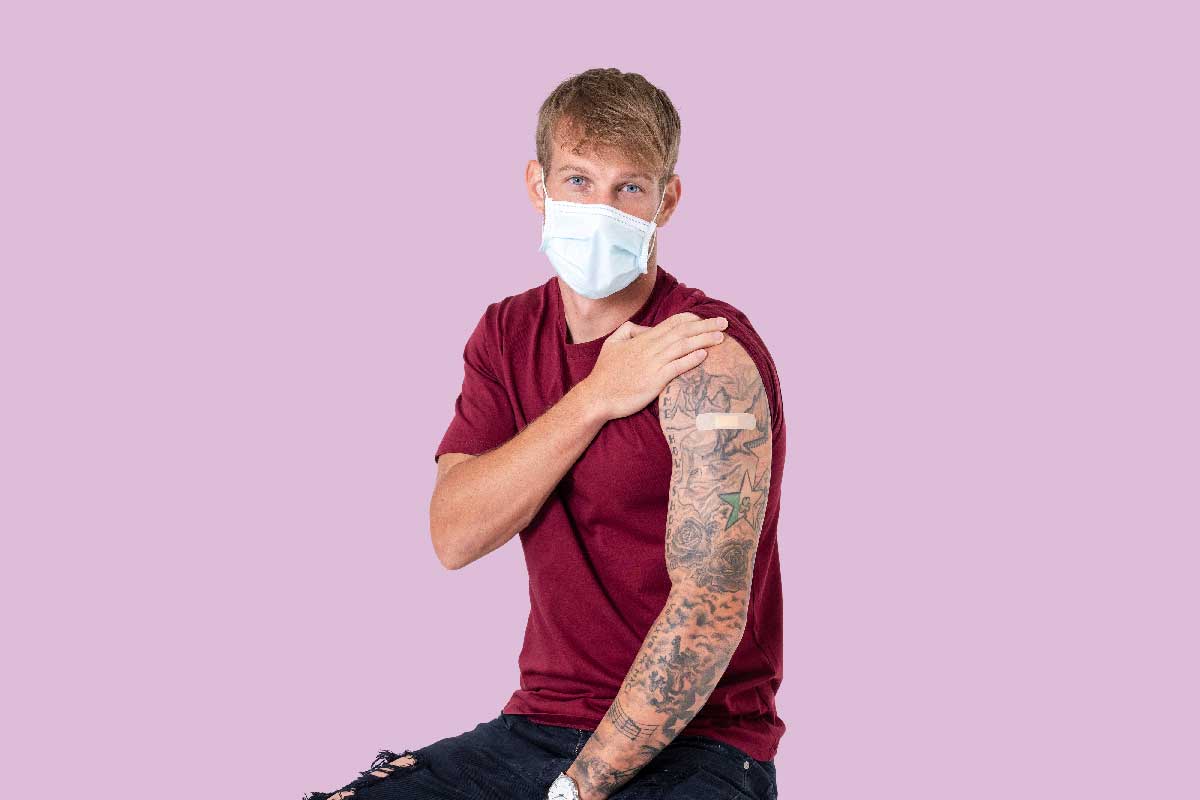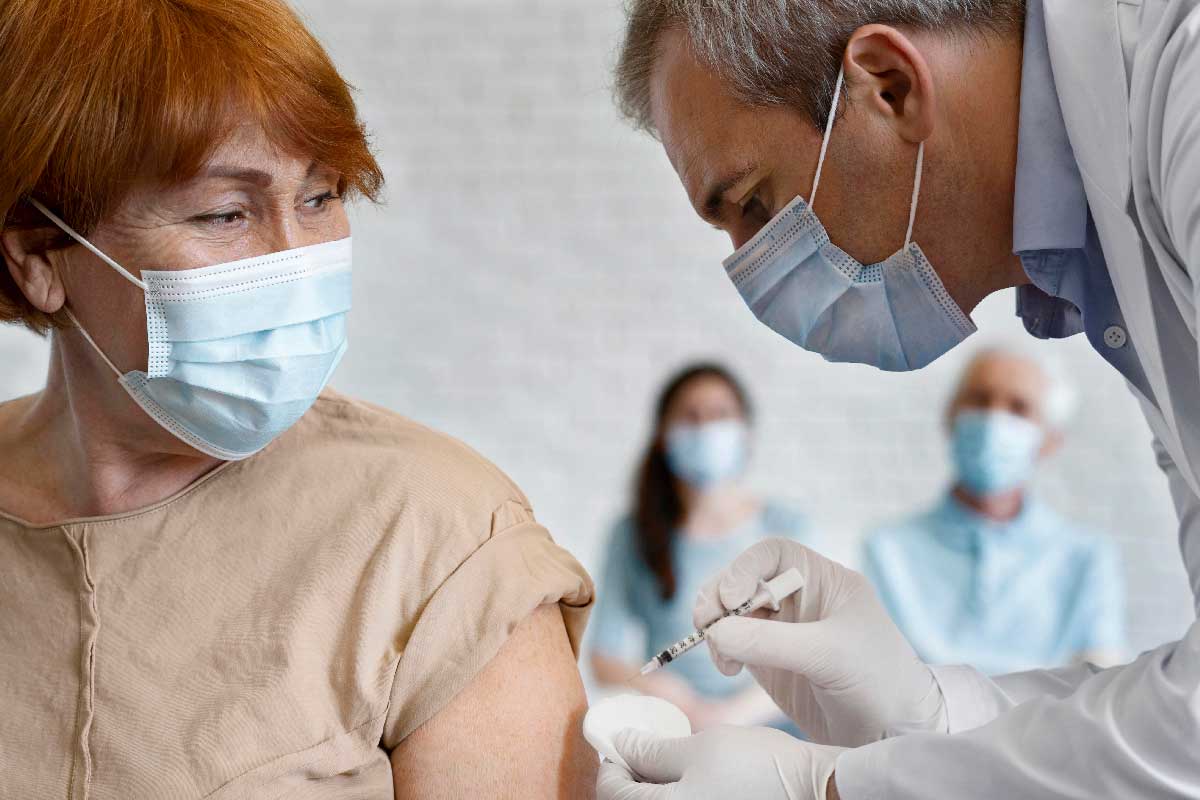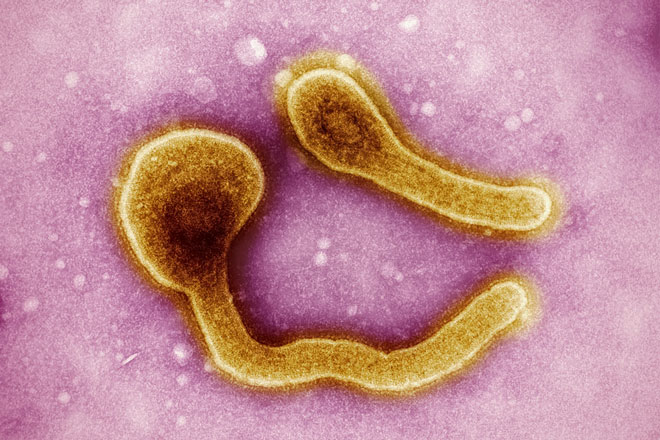How can we boost COVID-19 vaccine coverage in lower-income countries?
COVID-19 vaccine coverage in low- and middle-income countries is increasing at a steady pace, but remains lower than higher-income nations. VaccinesWork spoke to Ted Chaiban, Head of the COVID-19 Vaccine Delivery Partnership, about how we can ensure nobody is left behind in the vaccine race.
- 3 August 2022
- 9 min read
- by Priya Joi
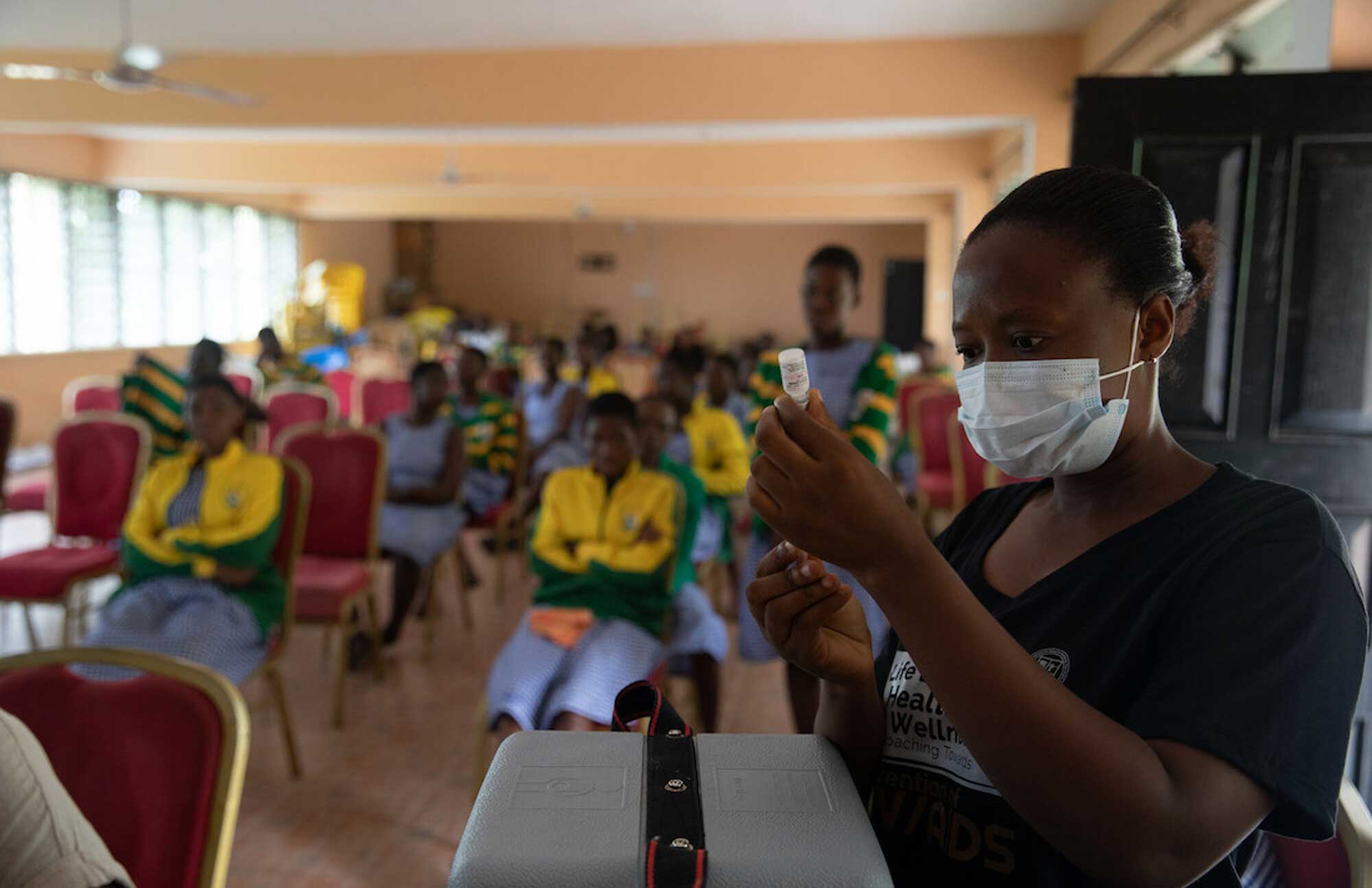
Gavi, WHO and UNICEF have worked closely together on vaccine delivery and rollout for many years, including through the first years of COVAX: what is different about the COVID-19 Vaccine Delivery Partnership?
The COVID-19 Vaccine Delivery Partnership (CoVDP) builds on the substantial work of the Country Readiness and Delivery Team, which is part of COVAX. We are the next chapter in that story. What we can bring to the table is greater access, both politically and in quick disbursement of funds, and we can move quickly. We’ve been building on experiences from other emergency responses to ensure a whole-of-government approach that ensures there is one country team, one support team, one plan, and one budget. This is critical in ensuring that no resources are wasted and that delivering COVID-19 vaccines offers an opportunity to strengthen health systems. We are focusing on quick impact funding that is targeted – countries and communities need the right amount of money at the right time and the right place.
At the start of 2022, we focused on supporting those 34 counties that were at 10% or lower coverage. Of those 34, 24 have now exceeded 10% full vaccine coverage with eight going above 20%. Ethiopia has gone from 3% in January 2022 to over 33% in July 2022. This is extraordinary.
The CoVDP prioritises support to countries that are at 10% or lower coverage. What are you focusing on right now to improve vaccination rates in these countries?
There are a number of services that are available to all 92 AMC entities, but the CoVDP focuses in terms of operational support on the 34 countries that were at 10% or less full COVID-19 vaccine coverage in January 2022. We are aiming to ensure that these countries accelerate their COVID-19 vaccination to first reach their country milestones with a focus on high-priority groups - health care and other frontline workers, the elderly and those living with comorbidities (and on the way to global targets). And we’re doing that by ensuring that the resources devoted to it are as focused as possible, recognising that there are many other priorities.
We’re also looking for sustainability and a broader positive impact on the health system so the resources devoted to COVID-19 vaccination also strengthen the health system. This includes measures such as improving cold chain, developing more robust information management systems, and increasing the remuneration of health workers.
Efficiency can also come from bundling or integrating health activities, so that COVID-19 vaccines are given at the same time as polio vaccines or screening for malnutrition. For example, Iraq has used COVID-19 vaccine delivery as a way to find zero-dose children (who never receive a single dose of vaccine) and bring them back intoroutine immunisation. If integration of services isn’t possible, then we advocate sequencing COVID-19 vaccination straight before or after another vaccination campaign - carrying assets over - to avoid overwhelming the health system.
If you look at the countries that are having the greatest challenge in increasing coverage, several are addressing humanitarian crises. So we are trying to work in a manner that recognises those priorities, so that COVID-19 vaccination is delivered as part of a package of services that are provided during the humanitarian response.
A good example of that is Chad, which has had significant number of priorities to deal with but launched a special campaign before Ramadan. The health minister wanted to reach nomadic and displaced populations, so CoVDP partners quickly pulled together US $4.9 million in rapid disbursement funds and this helped raise the vaccination coverage from 6% to 13% after the campaign.
We also feel it’s important to leave assets behind that strengthen health systems, especially the cold chain, and what is becoming increasingly urgent is health management information systems and data, so that high priority groups are identified to be able to increase coverage in a way that is most effective.
How much progress has been made since the start of 2022?
Though we are still dealing with a situation of inequity, there’s been good overall progress in global vaccine coverage since the beginning of 2022. While 62% of the world has been vaccinated, only 17% of people in low-income countries have been. Nonetheless, there has been significant progress: the rate of full COVID-19 vaccination coverage among the 92 Advance Market Commitment entities has gone from 28% in January to 50% now.
At the start of 2022, we focused on supporting those 34 counties that were at 10% or lower coverage. Of those, 24 have now exceeded 10% full vaccine coverage with eight going above 20%. Ethiopia has gone from 3% in January 2022 to over 33% in July 2022. This is extraordinary. We are now down to ten countries with 10% or less coverage. Progress has been remarkable and to the credit of countries who have worked well with the support of local partners.
Ultimately, to increase demand you have to make it easy for people to get the vaccine. This can be done through door-to-door vaccination campaigns that rely on community engagement and local health workers, that target priority groups, and recognising that everyone is dealing with several other health priorities.
For the countries that have managed to go over the threshold of 10% coverage, what have been some of the key factors in their ability to improve vaccination rates?
High level government ownership has been key – this means clarity from the top. In Tanzania, the president got vaccinated on camera and that resonates with people. Successful countries have also had commitment at the local level. In Uganda and Kenya, community leaders and religious leaders have also shown commitment and this too has been key.
We’ve also seen how important it is to decentralise the organisation and coordination of vaccination to as local a level as possible. The more precise you are about where there are mobile teams and where there are fixed sites for vaccination delivery through micro-planning, the more effective the campaign.
It’s also been critical to use trusted health system assets operating before the pandemic, for example community mobilisers that have worked on polio or HIV previously or community health workers, rather than mobilising a whole new set of people for COVID-19 vaccination.
Have you read?
What have been some of the challenges with COVID-19 vaccine demand?
When low-income countries wanted the vaccine earlier in the pandemic, supply chain bottlenecks and other structural barriers related to equity meant we had vaccine scarcity. Then the pandemic evolved and the Omicron variant emerged, which people believed to be less severe than previous variants. This changed risk perception in terms of how serious the disease is, specifically with regards to how this played out in parts of Africa and the Eastern Mediterranean.
By late 2021, many countries were devastated economically and had badly stretched health systems that needed to tackle many other priorities that had been put on the back burner at the start of the pandemic. This inevitably meant that by the time we caught up with being able to ramp up supply and give countries vaccines, demand had tailed off.
In most countries, the vast majority of people are willing to get vaccinated if it is an easy, seamless experience that is close to home. Most people can’t take a half day off to get vaccinated but will get the vaccine if it is easily accessible. This is why a part of vaccine demand is focused on the strategies for vaccine delivery - decentralising this so it is easily accessible, door to door, community to community.
Then there is the issue of vaccine hesitancy. We have seen that sometimes even educated health workers themselves are hesitant to take the vaccine. That inevitably filters down to the people they treat. This comes down to needing trusted leaders and a demonstration of confidence in the vaccine. It is critical to fight misinformation about COVID-19 vaccines through social media, engagement with local communities, political and religious leaders, opinion shapers and influencers, especially those that high priority groups trust.
What can be done to increase COVID-19 vaccine demand over the coming months?
Now, we need to work more holistically on a country’s health priorities to increase demand. For example, many health systems are totally depleted of health personnel, which requires investing in more clinics and health centres, and boosting the salary and recognition of frontline health workers.
We also need to reinforce primary health care as this is fundamental on the road to pandemic preparedness and response. It will be important to decentralise the production of health commodities so that Africa and Asia can make their own, not just for COVID-19, but other vaccines that they need, as this will avoid supply bottlenecks.
Increasing demand means a dialogue that shows we understand what people are going through, as many will have lost family members, seen a downturn in their livelihoods or may be battling other economic and health issues. Many low-income countries have seen spikes in other infectious diseases or have seen millions fall further into poverty – convincing them they need a COVID-19 vaccine will need to take that into account.
Easy access to the vaccine is crucial, and sometimes what looks like hesitancy is the practical concern that people cannot sacrifice hours or days of work to travel to get the vaccine.
We have to remember that not everyone automatically understands why getting vaccinated against COVID-19 is important, but if you tap into their primary concerns, such as making a living for their family, you can make it clear why the vaccines are still needed. If you explain, for example, that if they are sick with COVID-19 and can’t work, they will lose their daily wage, that will hit home.
Challenges in access can play into people’s issues with trust in authorities. For instance, I spoke to a woman in a refugee camp in North Darfur who have said that if the health worker in the nearest clinic, who they know and who has treated her own children, was the one giving the COVID-19 vaccine, they would have taken it. But when they’re asked to visit a clinic far away, suddenly they are unsure and so may decide not to get it.
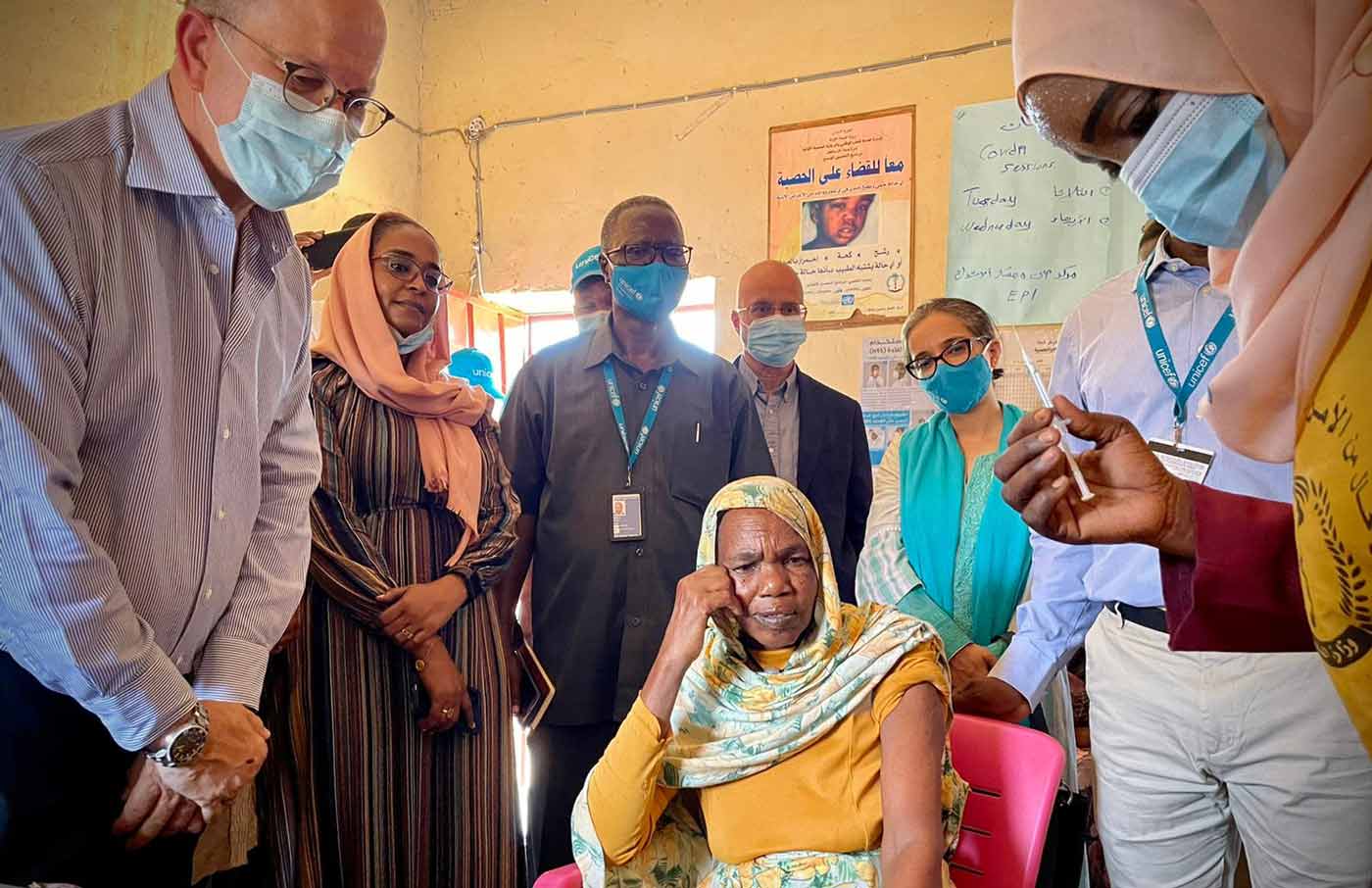
Photo credit: COVID-19 Vaccine Delivery Partnership
Ultimately, to increase demand you have to make it easy for people to get the vaccine. This can be done through door-to-door vaccination campaigns that rely on community engagement and local health workers, that target priority groups, and recognising that everyone is dealing with several other health priorities.
The next three to four months are key to continue the momentum and give everyone a chance to get vaccinated against COVID-19. We will need to support especially those countries that are dealing with humanitarian crises and competing priorities and sustain political engagement. Much has been achieved and much more can be done.
The COVID-19 Vaccine Delivery Partnership
In January 2022, WHO, UNICEF and Gavi established the COVID-19 Vaccine Delivery Partnership (CoVDP) to support vaccine delivery in the 92 AMC countries. It specifically provides urgent operational support to the 34 countries that were at or below 10% full vaccination coverage in January 2022 to progress towards national and global targets. The greatest benefits within this approach will come from prioritizing full vaccination and boosters for high priority populations – older adults, healthcare workers, and persons with co-morbidities including immunocompromised persons.
Instagram | https://www.instagram.com/together4covid19vaxdelivery/
Twitter | https://twitter.com/TedChaiban
More from Priya Joi
Recommended for you




